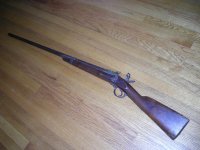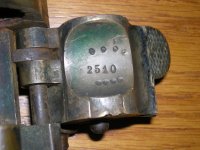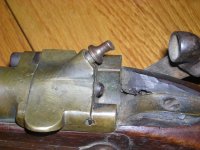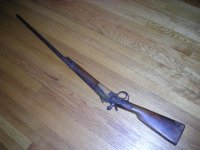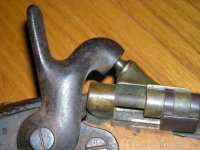bangbangshootshoot
New member
I recently acquired these 2 rifles & wanted to see if anyone may have some insight to share. The owner had zero info on them.
Here are a few measurements of the 1st set:
-The rifle measures 51-1/2" in length
-The barrel measures 34-1/4"
-Inside diameter measures @19mm at the muzzle & @20mm at the loading chamber.
-Has "US" stamped on the butt of the stock
Here are a few measurements of the 1st set:
-The rifle measures 51-1/2" in length
-The barrel measures 34-1/4"
-Inside diameter measures @19mm at the muzzle & @20mm at the loading chamber.
-Has "US" stamped on the butt of the stock

